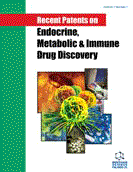Abstract
Congenital adrenal hyperplasia (CAH) is one of the most common diseases transmitted in an autosomal recessive manner and is caused by mutations of enzymes which are responsible for the process of adrenal steroidogenesis. According to the impairment of enzymes involved in steroidogenesis, several types of CAH can be distinguished. The most common type is associated with mutations in the CYP21A2 gene, encoding 21-hydroxylase enzyme and has different clinical forms: Classical (in which there are two types: salt wasting and simple virilization) and non-classical, characterized by less severe symptoms and late onset. CAH is characterized by a strong correlation between the genotype and the phenotype. Mutations in the CYP21A2 gene can cause different degrees of loss of 21-hydroxylase enzyme activity which result in a wide spectrum of clinical pictures. Several methods used to diagnose CAH (such as determining steroids in serum or urine) have been known from the 70’s. Modern diagnosis of CAH is based primarily on the use of genetic testing, which is the subject of numerous constantly updated patents. In this paper the most recent patents on the diagnosis of CAH were assessed.
Keywords: CAH, classical form of CAH, CYP21A2, 21-hydroxylase, 17-OH progesterone, virilization.
 41
41





















